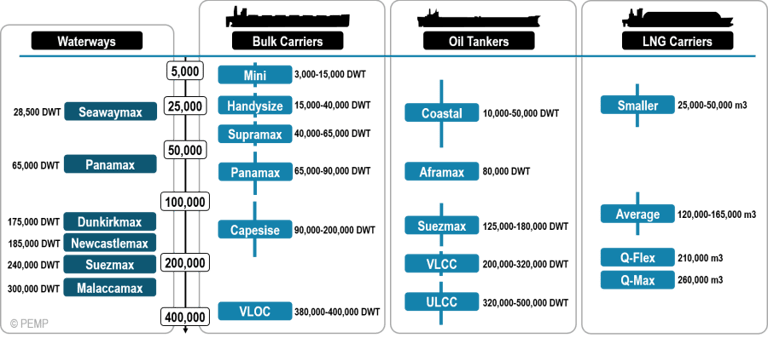Check out our new Substack, Merchandise Trade With Legion
What is Baltic Dry Index (BDI)?
The Baltic Dry Index (BDI) is a key indicator in the global shipping industry, reflecting the cost of transporting bulk commodities like coal, iron ore, and grain across oceans. Established by the Baltic Exchange, the BDI serves as a barometer of economic activity, with higher values indicating increased demand for shipping and potentially higher logistics costs. This blog explores the importance of the BDI, the different bulk carrier sizes that influence it, and provides a step-by-step guide on how importers and exporters can use the index to determine shipping rates and optimize their logistics strategies.
ENGLISH
5 min read


The Baltic Dry Index (BDI) is one of the most influential indicators in the global shipping industry, particularly for those involved in the transportation of bulk commodities.
Established by the London-based Baltic Exchange, the BDI provides an assessment of the cost of moving major raw materials such as coal, iron ore, and grain across the seas. It serves as a vital benchmark for shipping rates and is widely regarded as a leading indicator of economic activity.
The Importance of the Baltic Dry Index
For importers, exporters, shipping companies, and even investors, the BDI is an essential tool. It reflects the demand for shipping capacity versus the supply of dry bulk carriers. When the BDI rises, it indicates higher shipping costs due to increased demand for vessels, often driven by economic growth. Conversely, a decline in the BDI suggests lower shipping rates, often reflecting a downturn in global trade or an oversupply of ships.
Components of the Baltic Dry Index
The BDI is not a single rate but a composite of several shipping routes and vessel types. The Baltic Exchange calculates the BDI daily by compiling data from multiple shipbrokers. The index is based on spot rates (the current market price) for transporting dry bulk commodities across 20 global routes. These rates are averaged across different sizes of ships to provide a comprehensive view of the market.
Bulk Carrier Sizes
Understanding the different bulk carrier sizes is essential for comprehending the BDI, as the index is influenced by the types of vessels used to transport goods. Bulk carriers are typically classified into four main categories based on their deadweight tonnage (DWT), which measures the weight a ship can safely carry, including cargo, fuel, and provisions.


1. Capesize Vessels
DWT: 100,000+ tons
Routes: Capesize vessels are among the largest bulk carriers and are too big to transit the Panama Canal. They primarily operate on long-haul routes, such as those between Australia and China or Brazil and Europe, carrying heavy cargoes like iron ore and coal.
Impact on BDI: Capesize rates significantly influence the BDI due to their size and the volume of global trade they handle.
2. Panamax Vessels
DWT: 60,000 - 80,000 tons
Routes: Named after their ability to pass through the Panama Canal, Panamax vessels are smaller than Capesize ships and are used for shorter, more flexible routes, including trans-Atlantic and trans-Pacific passages.
Impact on BDI: Panamax rates provide insights into medium-sized bulk trade routes and are a key component of the BDI.
3. Supramax Vessels
DWT: 50,000 - 60,000 tons
Routes: Supramax vessels are smaller and more versatile, often operating in regional trades, including intra-Asia and Europe to Africa. They are equipped with onboard cranes, making them ideal for ports with less infrastructure.
Impact on BDI: Supramax rates add depth to the BDI by covering smaller, yet significant, trade routes.
4. Handysize Vessels
DWT: 10,000 - 50,000 tons
Routes: Handysize vessels are the smallest bulk carriers and are highly flexible, able to access smaller ports with limited draft. They are used for a wide range of cargoes, including grain, cement, and steel products.
Impact on BDI: Although Handysize rates have a smaller impact on the BDI, they reflect the health of regional and minor bulk trades.
How to Use the Baltic Dry Index to Determine Logistics Rates
The BDI is a valuable tool for importers, exporters, and logistics professionals to gauge the cost of shipping bulk commodities. Here's a step-by-step guide on how to use the BDI to determine logistics rates:
Step 1: Monitor the BDI Regularly
The first step in using the BDI is to keep a close eye on its daily movements. The index is updated daily, providing a real-time snapshot of the shipping market. Monitoring the BDI allows you to anticipate changes in logistics costs and adjust your operations accordingly. Various financial news platforms and shipping industry reports provide updates on the BDI.
Step 2: Understand the Components of the BDI
As explained earlier, the BDI is an aggregate of several sub-indices, each representing different vessel sizes and trade routes. Understanding these components helps you determine which part of the index is most relevant to your logistics needs. For example, if your cargo is typically transported on Panamax vessels, you should pay particular attention to changes in the Panamax rates within the BDI.
Step 3: Analyze Historical Data
Analyzing historical BDI data can provide insights into seasonal trends and cyclical patterns in shipping rates. For instance, you might notice that the BDI tends to rise during certain months when commodity demand peaks. Understanding these patterns can help you plan your shipments to avoid periods of high costs or to capitalize on lower rates.
Step 4: Correlate BDI Movements with Commodity Prices
The BDI often correlates with the prices of the commodities it measures. A rise in commodity prices can lead to increased demand for shipping, driving up the BDI. By correlating BDI movements with the prices of the goods you import or export, you can better understand how shipping costs will impact your overall expenses or revenues.
Step 5: Calculate Estimated Shipping Costs
While the BDI provides a broad view of shipping rates, you will need to calculate estimated shipping costs based on your specific needs. To do this, you can use the BDI as a reference point and adjust for factors such as the type of cargo, shipping route, and vessel size. Many shipping companies offer calculators or quotes based on current market rates, which can be cross-referenced with the BDI.
Step 6: Incorporate BDI Insights into Contracts
When negotiating contracts with shipping companies, incorporating BDI insights can be advantageous. You can use the index to negotiate favorable rates or to include clauses that adjust shipping costs based on BDI fluctuations. This can help mitigate the risk of sudden spikes in shipping rates.
Step 7: Use BDI as a Strategic Planning Tool
Beyond determining immediate logistics rates, the BDI can also be used as a strategic planning tool. By analyzing long-term trends in the BDI, you can make informed decisions about your supply chain, such as diversifying suppliers, adjusting inventory levels, or exploring alternative shipping routes.
Step 8: Consider External Factors
While the BDI is a powerful indicator, it is essential to consider external factors that may affect logistics rates. These include fuel prices, geopolitical events, port congestion, and environmental regulations. Incorporating these factors alongside BDI data will provide a more comprehensive view of your logistics costs.
Conclusion
The Baltic Dry Index is an invaluable resource for anyone involved in the global trade of bulk commodities. By providing a daily snapshot of shipping rates, the BDI helps importers, exporters, and logistics professionals make informed decisions about their supply chains. Understanding the different bulk carrier sizes and how they influence the BDI is crucial for accurately interpreting the index.
Using the BDI as a guide, you can anticipate changes in logistics costs, optimize your shipping strategies, and negotiate better contracts with shipping companies. While the BDI is a vital tool, it is most effective when used in conjunction with other market indicators and an understanding of broader economic trends.
In a world where global trade dynamics are constantly shifting, staying informed about the BDI can give you a competitive edge, helping you manage costs and maximize profitability in your import/export operations. Whether you are shipping coal across oceans or importing grain to feed your local market, the Baltic Dry Index provides the insights you need to navigate the complex world of maritime logistics.

